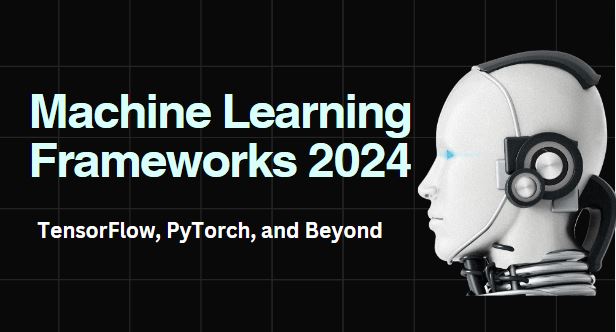
In machine learning, building an accurate and reliable model is only part of the process. To unlock the full potential of any model, fine-tuning is essential. This is where hyperparameter tuning comes into play.
In this blog, we’ll explore what hyperparameters are, why tuning them is important, and how techniques like grid search and random search can optimize model performance.
What Are Hyperparameters?
In machine learning, there are two types of parameters:
- Model Parameters: These are learned directly from the training data during the model’s training process (e.g., weights in a neural network).
- Hyperparameters: These are set before the training process begins and control how the model learns. Examples include the learning rate, the number of neighbors in K-Nearest Neighbors (KNN), or the number of trees in a random forest.
Unlike model parameters, hyperparameters are not learned from the data. Instead, they must be specified by the data scientist or automated through tuning techniques. The challenge is finding the right combination of hyperparameters that yield the best results for your machine learning model.
Why Is Hyperparameter Tuning Important?
Choosing the correct hyperparameters can significantly impact your model’s performance. The right settings can help a model generalize better to unseen data, improving its accuracy and robustness. Conversely, poor choices may lead to overfitting (where the model performs well on training data but poorly on new data) or underfitting (where the model fails to capture important patterns in the data).
Hyperparameter tuning allows you to explore various combinations of settings to optimize the model’s performance metrics, such as accuracy, precision, or recall.
Hyperparameter Tuning Techniques
Now that we understand the importance of hyperparameters, let’s dive into the most common techniques for hyperparameter tuning: grid search, random search, and other advanced methods.
1. Grid Search
Grid search is one of the simplest and most widely used techniques for hyperparameter tuning.
How It Works
Grid search works by creating a grid of possible hyperparameter values and evaluating every possible combination. For example, if you’re tuning a random forest, you may want to try different values for the number of trees (n_estimators) and the maximum depth of the trees (max_depth). If you decide to test 3 different values for each hyperparameter, grid search will evaluate all 9 (3×3) possible combinations.
Advantages
- Exhaustive Search: Grid search tests all combinations, ensuring you don’t miss a potentially optimal set of hyperparameters.
- Simple to Implement: It’s easy to use and understand, making it a great starting point for hyperparameter tuning.
Disadvantages
- Computationally Expensive: Evaluating every possible combination can become computationally expensive, especially when dealing with a large number of hyperparameters or a wide range of values.
- Inefficient: Not all hyperparameter combinations contribute equally to the model’s performance. Grid search doesn’t prioritize more promising areas of the search space.
When to Use Grid Search
Grid search works well when you have a small number of hyperparameters or a narrow range of possible values to test. It’s especially useful for models where the training time is relatively short.
2. Random Search
Random search offers a more efficient alternative to grid search.
How It Works
Instead of testing every possible combination, random search selects random combinations of hyperparameters within the defined range. This randomness allows the search to cover a wide variety of combinations without needing to evaluate each one.
Advantages
- More Efficient: By randomly sampling combinations, random search can often find a good set of hyperparameters faster than grid search.
- Scalable: It performs better in high-dimensional search spaces, where grid search may be computationally prohibitive.
Disadvantages
- Not Exhaustive: Random search might miss the optimal set of hyperparameters if it doesn’t randomly select that combination.
- Requires Longer Runs: While it’s more efficient than grid search, the randomness of the process may require running the search for a longer period to find the best settings.
When to Use Random Search
Random search is particularly useful when the hyperparameter space is large and you want a quicker, more efficient exploration compared to grid search. It’s often used when training models that take longer, such as deep neural networks.
3. Bayesian Optimization (Advanced Technique)
Bayesian optimization is an advanced hyperparameter tuning technique that attempts to be more efficient by using past results to inform future searches.
How It Works
Bayesian optimization builds a probabilistic model of the objective function and uses it to select hyperparameter settings that are most likely to improve the model. The key idea is to balance exploration (trying new hyperparameter values) and exploitation (refining known good values).
Advantages
- Fewer Evaluations: Bayesian optimization can find optimal or near-optimal hyperparameters in fewer evaluations compared to grid or random search.
- Informed Search: It uses information from previous runs to make more informed decisions about which combinations to test next.
Disadvantages
- More Complex: Bayesian optimization requires more complex mathematical concepts and is harder to implement than grid or random search.
- Not Always Needed: For simpler models or smaller hyperparameter spaces, the added complexity of Bayesian optimization may not be worth the extra effort.
When to Use Bayesian Optimization
This method is ideal for complex models with long training times or large hyperparameter spaces where traditional grid or random search becomes inefficient.
4. Early Stopping (Specific to Deep Learning)
In deep learning, early stopping is another form of hyperparameter tuning that helps prevent overfitting. During the training process, the model’s performance on a validation set is monitored, and if performance stops improving (or worsens), training is halted to avoid overfitting.
Best Practices for Hyperparameter Tuning
- Start Simple: Begin with grid or random search before moving to more advanced techniques like Bayesian optimization.
- Use Cross-Validation: Always validate hyperparameter choices on a validation set to ensure they generalize well.
- Prioritize Hyperparameters: Focus on tuning the most impactful hyperparameters first (e.g., learning rate, depth of trees) before fine-tuning others.
Conclusion
Hyperparameter tuning is an essential part of optimizing machine learning models, and choosing the right technique can significantly affect performance. Whether using grid search, random search, or more advanced methods like Bayesian optimization, understanding your hyperparameter space and model needs is key to achieving the best results.



